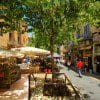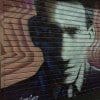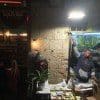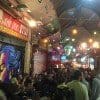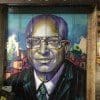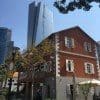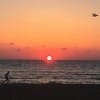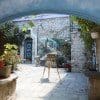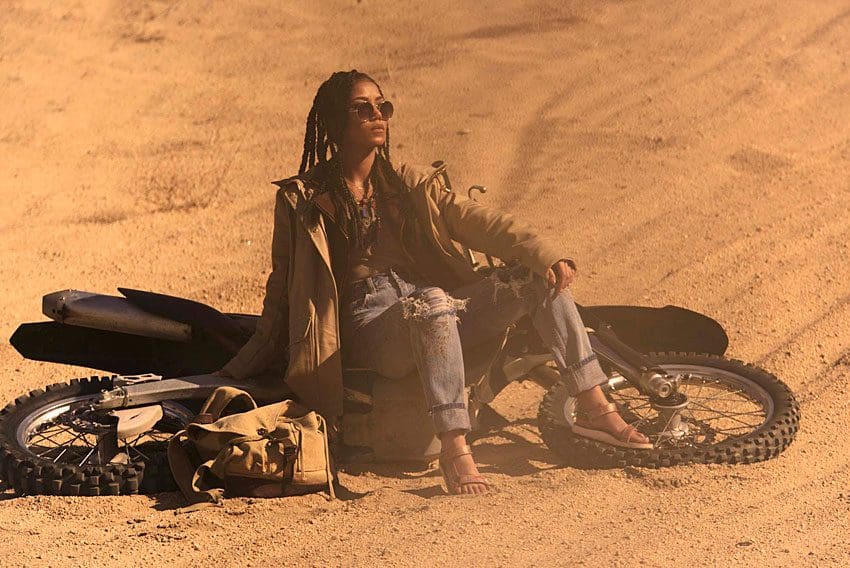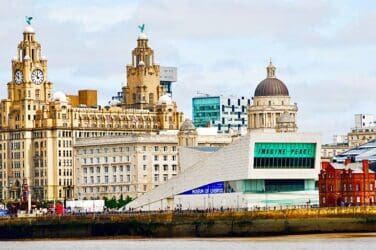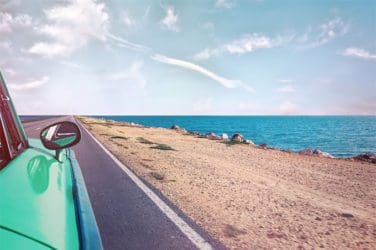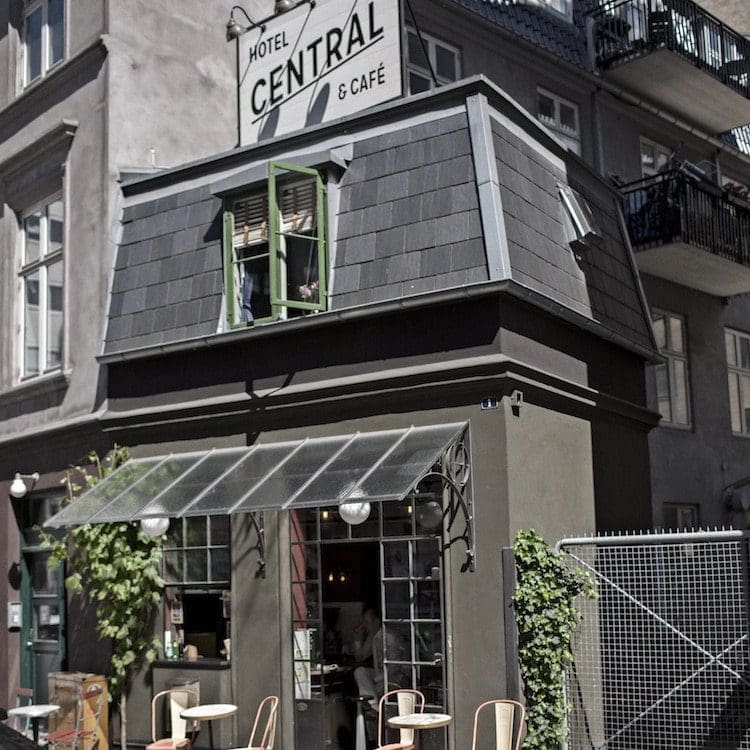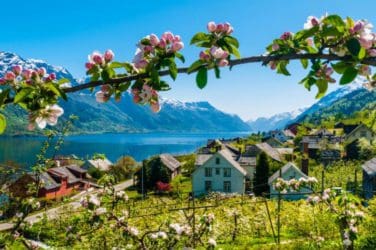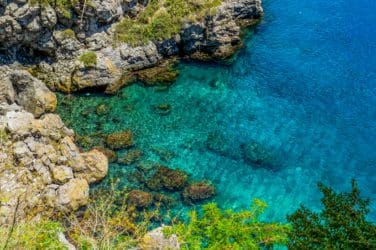Words: Chris Zacharia
At first glance, Leon Azuleov’s Biblical watercolours look nice. Pretty. Peaceful, even. And then, suddenly, you see them.
Words. Hundreds of thousands of them. Tiny, barely decipherable words forming the structure of each painting. The mountains are carefully assembled piles of letters, the rivers a gushing flow of language.
“Each painting tells a story from one of the five books of Moses” Azuleov explains. “And each one has the entire text of one of these holy books inside, in microcalligraphy”
I pour over each painting, squinting until it yields its blooming crop of ancient Hebrew. Although the words can be no bigger than a millimeter, they are all elegantly traced, arcing gracefully across the paper. Clearly, they’re good with their hands in Israel.
Yet when you think about artistic places, Israel doesn’t exactly spring to mind. But even the briefest visit to the Holy Land would prove beyond all doubt that Israel is a remarkable hotbed of art.
Tzvat is an ancient city. Located in the heights of Galilee in the north of Israel, there’s been a settlement here for over four thousand years. The town itself has a pristine, serene atmosphere, as if lofty position in the mountains safeguards Tzvat from worldly troubles.
But it’s not just the altitude. Tzvat is the global centre of Kabbalah. A kind of Jewish mysticism, Kabbalah claims to be the inner teachings of Judaism. Unlike Judaism, however, the teachings of Kabbalah are not just for Jews. They emphasise universal spiritual precepts of love, and the power of suffering to stimulate inner transformation.
Although Kabbalah is very much an internal experience, in Tzvat it has had a very outward expression. Strolling through steep, shaded streets of cobblestone, I’m surrounded by religious art. If this makes you think of flat, reproachful icons, think again. Kabbalistic art is much more mystical, spanning precious stones to dazzling woven quilts and intricate metalwork.
Every path is lined with workshops, the brilliant efforts of their crafts spilling out into the road, caves of treasure bursting their boundaries. Whether on canvas or carved wood, most of the art features a rich, sapphire blue.
“This shade of blue is the colour of Tzvat” my guide explains. “Blue represents the heavens and the sky, both of which are the same word in Hebrew. The art is intending to bring this blue of the heavens to the people of the Earth”.
At the centre of this creative maelstrom is the Tzvat Kabbalah Centre. Housed in a five-hundred year old building with a blossoming fig tree in its courtyard, it’s home to several workshops of artisans.
Upstairs are four traditional looms, each manned by a young weaver expertly guiding the warp and weft of the shoals. Downstairs is a metal workshop, where Yafim designs and crafts handmade Jewish iconography using precious metal and stones. With the obvious guilt of someone who has no intention of buying, I admire his exquisitely ornate jewellery.
Despite its intrinsic association with Judaism, most Israeli art has nothing to do with religion. Away from the mountain idyll of Tzvat, it has a much racier character. Even Jerusalem produces plenty of non-religious art. Driving in from the West, we see scattered suburban houses and big anonymous buildings until we’re halted by rush hour traffic. Crawling into the vertiginous city, it doesn’t seem like the most promising place for an urban art scene.
Once we’re in the heart of Jerusalem later on the same night, you get a sense of why people speak of the city’s energy. Jerusalem will always be more famous for what once happened there, rather for what the future holds. Yet the city’s outlook is far from backward. On a Thursday night, the place is bustling.
At night, the Yahane Mehuda market becomes filled with thousands of stylish young people out for a drink, a dinner or a dance. Far more than Israel’s coastal cities, Jerusalem has multicultural, Middle Eastern feel. Arabic, English and Hebrew jostle with countless other tongues in what truly feels like a melting pot.
Within the narrow alleyways and sidestreets, revellers sit upon upturned vegetable carts, chatting and drinking in the night. Turning into Hayyim Street (‘Hayyim’ means ‘Tree of Life’ – all the market roads named after plants), within the covered section of the market, we’re swallowed by a sea of partygoers.
We pass craft beer hotspots, cocktail bars, sizzling shawarma stalls, hookah pipes surrounded by smatterings of garden furniture, half a dozen hi-fis blaring out everything from DJ Koze to Offspring. Somehow, listening to Pretty Fly (For a White Guy) feels wrong in the world’s holiest city.
Even those shops with their shutters down are part of the fun, revealing one of Jerusalem’s latest artistic flourishings. From the metal bars of the shutters, colourful murals of the country’s heroes stare back at you.
Just two years ago, 22-year old British-born Solomon Souza began decorating the street-facing shutters of the market at night. Dozens of portraits and some worldwide acclaim later, the stallholders squabble for Souza’s work, arguing over which stall should get which celebrity.
I recognise the unmistakable mustachioed face of Albert Einstein, with his sad, wise eyes, bursting from the bricks in a melange of purple and blue. Israeli political figures, whose names I dimly recognise, smile back at me in this gallery of greats. The next figure I correctly identify, two streets later, is Steven Spielberg.
Jerusalem is no less engaging in the daytime. From our hotel, Mount Zion in the west of the city, we witness the sunrise over the Tower of David and the grassy Hinnom Valley below. Jerusalem is a hilly city, built across mountains and vales, spreading out from its ancient core. Our ten-minute walk to the old city involves a steep uphill climb.
Entering the old city walls, I suddenly find myself in a different world. Within this square-shaped citadel, a kilometre in diameter, you’ll find the vast majority of Jerusalem’s cultural treasures. Everything is built from Jerusalem stone, a distinctive blend of orange, pink and white. Around each corner, we encounter something ancient, something spectacular.
The Old City is divided into unofficial quarters. There are no walls or signs between them, but when you’ve passed from one to another you quickly take notice. As if at the turn of a dial, everything subtly changes the moment we cross into the Arab quarter: the clothes, the smells, the language.
Before we’ve had a chance to acclimatise, we’re thrust into the Christian quarter, and once again things subtly shift. Unable to resist the allure of the spiritual, I stop at the Church of the Holy Sepulchre. Supposedly home to the remains of Christ’s tomb, it is one of the most visited shrines in the world. As we enter, my guide mentions that the church has been destroyed and rebuilt no fewer than eighteen times. Inside, tribes of nuns roam the relics, their faces alternatively chastened and beatific. In front of the Golgotha, traditionally regarded as the site of Jesus’s crucifixion, a group of nuns with South American accents huddle together to take a selfie.
It’s easy to forget that we’re standing on occupied territory, over which the international community refuses to recognise Israel’s sovereignty. The Old City was once part of Palestinian East Jerusalem, annexed by Israel in the Six Day War of 1967. Outside the church, a sprawling gift shop does brisk business in madonna-with-child fridge magnets, candle holders and prayer mats.
With the history of three major world religions converging here – Christianity, Judaism and Islam – their food has followed. Outside of the Old City, the pre-Sabbath market is in full swing. These streets, so busy last night, are somehow even busier as Jerusalemites flock to stock up on supplies before the Sabbath.
“The market is like a volcano” my guide explains, as we force our way through the afternoon crowds. “It gathers energy during the week, building and building, until finally it explodes, and then, like flowing lava, the people go home”
It certainly captures the intensity of the place. Not that Jerusalemites don’t have time for each other. We’re halted by a large circle of people, who surround a man playing an oud as a woman skilfully keeps the beat on a traditional drum with her rhythmic fingers. It’s mesmerising, and even in the heat and the crowd I lose awareness of my surroundings, the lilting music too beguiling to resist.
Sensory pleasure of a different kind arrives with a mouthwatering tour of some of Jerusalem’s street food. We start at a cosy Georgian restaurant, gorging on soft, doughy khachapuri, filled with salty salguni cheese. It’s somehow even better than pizza, its closest relative.
We’re still licking our fingers when we reach a Kurdish kitchen, who serve us koupes. Favoured across the Middle East, they’re deep fried semolina cylinders filled with herbs and mincemeat. They’re followed by dolmades, another regional specialty. Vine leaves are skillfully stuffed with rice, parsley and dill. Delicious aromas waft from every direction. This, surely, is the best way to experience the cultural diversity of Jerusalem.
Fortified, it’s time to head to the coast for an encounter with a very different city – Tel Aviv. Whereas Jerusalem is one of the oldest continuously occupied sites in the world, estimated at over 5,000 years old, Tel Aviv was founded in the 20th century. You can tell immediately – the city is laid out in a logical, American-style grid system. No mysterious back alleys or hidden shrines here.
But what Tel Aviv lacks in history, it more than makes up for in culture. Tel Aviv is a youthful, forward-looking city with a palpable energy. A smattering of skyscrapers opens out onto a long, sandy beach, where the city’s residents can be found relaxing or throwing a frisbee after a day in the office. It feels like a Californian city on the Mediterranean.
The similarities with America don’t end there. Tel Aviv has the second-highest concentration of tech startups outside of Silicon Valley. Walking through the city’s pristine streets, punctuated by plazas with smooth green grass and glistening new facilities, you can feel how this has enriched the city.
Judging from the city’s world-famous nightlife, the old adage ‘work hard, play hard’ seems to be popular in Tel Aviv. With the second-largest Gay Pride parade in the world, and the largest in Asia, Tel Aviv is a liberal place. Our bar-crawl begins at a swanky, achingly cool cocktail bar called Aria, but the variety of the city’s clubs is impressive. Many were opened by music enthusiasts, eager for a place they could hang out with their friends. This personal touch shines through. In many places the owners are propping up the bar, greeting well-known guests with hugs and drinks and making sure that the music is just right.
It’s a winning formula. We dance through Radio, whose DJ slams down an excellent remix of Talking Heads’ This Must Be the Place, before heading on to Jimmy Who?, housed in an elegant former bank. We grab a gin and tonic in Sputanik, a vast plant-filled yard with a 1960s space-race theme, where I meet two Russian girls apparently fascinated to meet a journalist but unable to stop giggling at my attire.
A five minute stroll takes us to Kuli Alma. Descending into the enormous high-ceilinged basement is like being thrust into a festival at the top of its game. Plenty of guests are in fancy dress. Multicoloured fairylights set the place aglow. Each corner of the club is devoted to something cool, from a comfy chillout zone to an art gallery. Best of all, the dance floor is absolutely throbbing, a big beat courtesy of Sean Paul setting the tone.
By the time we leave, somewhere around the 2am mark, I can’t help but ask why there aren’t more clubs like this in Britain.
I’m grateful for the silence of Sabbat the following morning, where my head seems to be cracking like a hatching egg. A brisk walk in the fresh morning air, a breeze scented with orange blossom, and the promise of a world-class art gallery gets me going.
The Tel Aviv Museum of Art is housed in one of those gigantic modern complexes that you’ll either love or hate. For my part, I enjoyed it a lot more once we were inside.
“Jews love to collect things” my guide declares as we’re descending on the escalator. “And rich Jews particularly like collecting art. For us, it’s bad to boast about many things, but it’s ok to boast about art. So many wealthy Jews like collecting art because it’s something permissible to boast about. And when they die, they usually leave their collections to the state. That’s why Israel has one of the best art collections in the world”
He’s not wrong. We pass the paintings of such luminaries as Manet, Matisse, Rembrandt, van Gogh and Picasso. There’s a whole host of Chagall’s work, some of Kandinsky’s finest and Pollock’s mesmerising ‘Earth Worms’. The modern art collection is particularly strong for impressionism and cubism. There’s also an excellent Old Masters collection, where we gather to murmur about the talent of Rubens, Van Dyck and Reynolds.
An eye opening Israeli collection proves to be the highlight. A darkened room yields the miniatures of Helena Rubinstein: tiny reproductions of domestic life from the early twentieth century. I’m fascinated by these little scenes; tables laid out for dinner with candles, suitcases and trunks being packed, drawing rooms complete with wallpaper, furniture and comforts. Reminiscent of dolls houses, but with the unmistakable ring of authenticity, they’re sure to delight children. And adults, of course.
Two hours vanish in a soothing glide around the spacious galleries. Emerging into the bright afternoon sunlight, I’m struck by how Israel’s art scene balances traditional and religious art with contemporary art.
Back in Tzvat, I find myself whiling away the final afternoon of my trip in the wine bar of one of Tzvat’s ancient vineyards. I presume that the silent proprietor, a wizened old man with a surly expression, doesn’t speak English but, as it turns out, like many Israelis he’s disarmingly fluent. I ask him how he came to be in Tzvat.
“I would spend at a hundred days a year flying” he says, shaking his head. “Imagine one hundred days every year in one of those aeroplanes. Rushing around, never any time for anyone. I got to 50 years old and I thought, slow down! Enough is enough. No more chasing after things, always wanting the next and the next and the next. From now on, I’m never leaving Tzvat. Look at this place” he says, gesturing to the magnificent green hills in the distance.
“You can chase after happiness your whole life and only become more miserable, tiring yourself out, never enjoying the moment. Slow down: be grateful for what you have, and enjoy life”
I’ll drink to that.
To plan your trip to Israel, visit Go Israel for the latest news, information and holiday ideas


